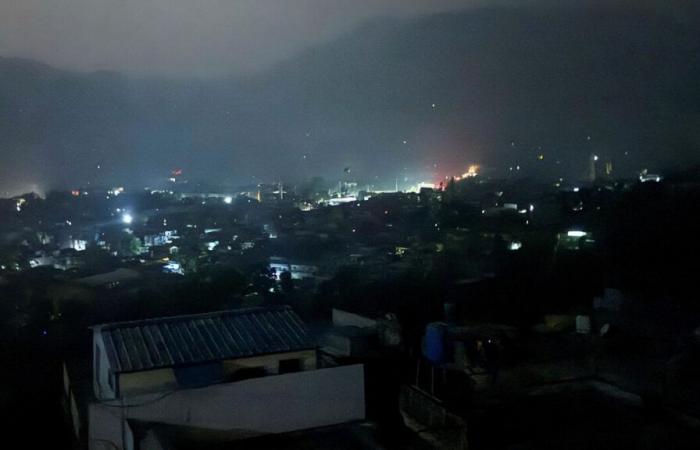
The threat of confrontation has been hovering for several weeks. She is now concrete. During the night from Tuesday to Wednesday, India led strikes in Pakistan, pushing Islamabad to promise a “response”, the two countries with shot. According to a first assessment established Tuesday evening by the Pakistani Ministry of Defense, three civilians, a child of which were killed in Indian strikes.
“Not long ago, the Indian armed forces launched Operation Sindoor by hitting terrorist infrastructure in Pakistan (…), hence the terrorist attacks against India were organized and directed,” the Indian government said in a short statement.
The Pakistani army said that new Delhi had targeted “three regions” from Pakistan, citing two cities in the Pakistani cashmere, the main one, Muzaffarabad, as well as a third in the Pendjab, a border of India. AFP correspondents in Pakistani cashmere and in the pendjab have heard several strong explosions.
Security committee summoned to Pakistan
On the other side of the control line (LOC), the de facto border which divides cashmere in two, AFP journalists have heard many explosions increasingly close. “We will fight back when we choose,” added the spokesman for the Pakistani army, Lieutenant General Ahmed Chaudhry.
The Indian army said that Pakistan had made artillery fire on its territory, accusing it “once again violating the ceasefire agreement by performing artillery fire in the Bhimber Gali and Poonch-Rajauri” sectors in the Indian cashmere. She added that she “rippled appropriately and calibrated”.
A high Pakistani rank has said it said “for the moment information on strikes on four places: Muridke and Bahawalpur at Pendjab and Kolti and Muzaffarabad in cashmere”. “There will be a scathing answer soon, that will not be there,” he added. Pakistan has also summoned its national security committee for a meeting in the morning.
India defends a “targeted and measured action”
In the midst of these announcements, American president Donald Trump said hoped that clashes between India and Pakistan “stop very quickly”. Since April 22, armed men have shot down 26 men in the part of the cashmere administered by India, the international community fears a new conflagration between the two nuclear powers, neighboring and rival since their partition in pain in 1947.
-Immediately after this attack, never claimed, New Delhi accused Islamabad. Pakistan denies. But the Indian police provide at least two Pakistani nationals among the attackers and their accomplices and ensures that they are linked to the Let, the jihadist movement Lashkar-E-Taiba based in Pakistan, already suspected of the attacks which had left 166 dead in Bombay in 2008.
One of the sites targeted during the night by the Indian army is the Subhan mosque in Bahawalpur, linked according to Indian intelligence to groups close to the Let, notably the Jaish-E-Mohammed (Jem). “Our action is targeted, measured and aims to avoid climbing. No Pakistani military installation has been targeted, “said the Indian government’s statement, saying that it has shown” considerable deduction “. “We are holding our commitment to ensure that those responsible for this attack are accountable,” she added.
Previous fire exchanges
Shortly before these strikes, the US State Department had said that it had called India and Pakistan to work for a “responsible resolution” of their dispute. New Delhi had just threatened to “cut the water” which irrigated Pakistan, in retaliation for the murderous attack on April 22.
The next day, India had suspended its participation in a water sharing treaty signed in 1960 with its neighbor. Many experts and populations fear a military confrontation between the two nuclear powers, which have already delivered several wars.
For the past ten nights, Indian soldiers and Pakistani have been exchanging light weapons along the border between their countries. Without having victims for the moment, according to New Delhi.
In recent days, Pakistan has for its part proceeded to two soil-to-ground missile tests. The one led on Saturday concerned a machine with a range of 450 km, the distance between the Pakistani border from the Indian capital New Delhi.
India must precisely carry out civil defense exercises on Wednesday, according to their Ministry of Information Wednesday, to prepare the population to “protect themselves in the event of an attack”. In this climate, UN Secretary General Antonio Guterres urged the two countries on Monday to “move away from the precipice”.







